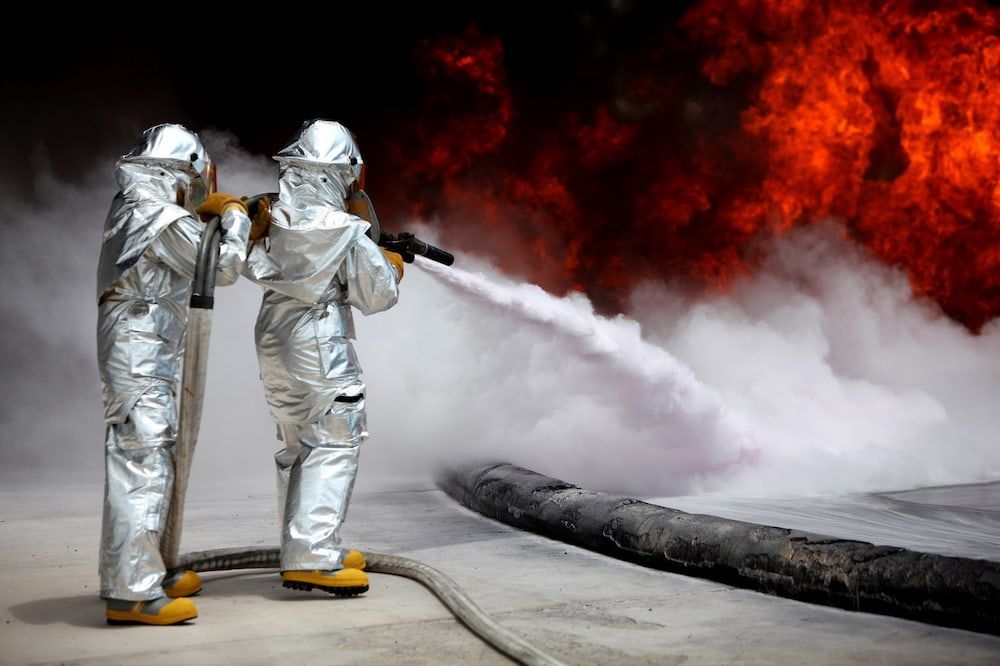
What Gases Are Used In a Suppression System?
As you assess all of the chemicals that are released from fire suppression systems, you will find that not all of these systems release gas into the atmosphere in the event of preventing a harmful fire.
However, for a lot of the successful ones, gas fire suppression systems seem to do an excellent job when called upon. You may think that these gaseous fire protection systems are mainly the same gas, but this isn’t the case as there are many opposing gases that can extinguish the fire effectively.
Today, we’re going to cover which gases are used in a suppression system to give you a better understanding of what to expect when investing in the health and safety of your domestic or commercial property. Carry on reading to learn more!
What Gases Are Produced in Different Fire Suppression Systems?
In relation to what gases are produced in different fire suppression systems, there are a multitude of effective gases that will begin and end the process of detecting, alarming and automatically extinguishing a fire. Here are the different types of gases that play this huge role:
- Inert gas
- Carbon dioxide (CO2)
- Clean agent gases
- Halon
These are the 4 different types of gases that are typically stored within a gaseous fire suppression system. Although, even though there are 4 types - there are many gases within these categories that are classified under the name of these gases, yet hold their own name.
Exploring the Usefulness of Each Gaseous Fire Suppression System
Now that you know the 4 different types of gaseous fire extinguishing systems that you can invest in, exploring the usefulness and features of each gaseous fire suppression system will provide you with a better understanding of what could potentially suit your workplace or home environment.
This will give you the best chance of optimal health and safety for your family, friends or colleagues. Avoiding serious health risks and expensive equipment being damaged is paramount - thus, let’s explore each fire suppressant in detail:
Inert Gas Suppression Systems
All different types of
inert gas fire suppression systems have an environmentally friendly approach to suppressing fire and that is by reducing the oxygen level in the fire and keeping people safe with their human-friendly gases. Here are the different types of inert gas suppression systems:
Argonite Gas Suppression Systems
In regards to what is an argonite gas suppression system, this is a blend of 50% argon and 50% nitrogen that reduces the oxygen concentration of the onrushing flames to the point where the fire can’t ignite any longer - whilst being completely safe for the presence humans when evacuating the building.
This environmentally friendly compound has no ozone depletion potential, meaning that when released into the atmosphere - it will have no impact on adding to the nature of global warming. Often, gases seem to add global warming potential. Yet, this mix of argon gas and nitrogen will extinguish a fire and leave no damaging health issues behind.
These argonite fire suppression systems act quickly to suppress the flames (only taking 1 minute in the majority of situations) - whilst leaving no harmful residue behind in the aftermath of a fire hazard.
Inergen Gas Suppression Systems
Inergen is also classed as a clean agent as it protects humans from the dangers that a fire can issue.
Inergen typically takes a wide storage capacity but can reach extremely far with its detection and extinguishing of flames, but can also be suited for leaky enclosures in a tight space. Thus, the mixing of chemical agents with fire will prevent you from harm (even if it is a huge building).
Nitrogen Gas Suppression Systems
This substance will act the same as the other inert gas suppression systems by reducing the oxygen level of the fire in enclosed spaces. However, nitrogen is excellent as it won’t decompose or produce any by-product in the aftermath of the fire - meaning you won’t have to worry about a massive cleaning project after your building has suffered.
Clean Agent Gas Suppression Systems
Clean agent fire suppression systems are similar to inert fire suppression systems in the fact that they are safe for humans, have no global warming potential (GWP) and ozone depletion effect. However, the key difference between these two is that chemical clean agents remove the heat of the fire - rather than reducing the oxygen level of the flames.
This cooling element is achieved by either the HFC-227ea clean agent suppressant or the FK-5-1-12 chemical agent. Now what is the difference between the two? Well, HFC-227ea is known as FM-200 and FK-5-1-12 are known as Novec 1230. When comparing these two clean agents, you will first notice that 3M Novec 1230 is more environmentally friendly than FM-200.
In terms of cost and storage, you will be spending less money investing in FM-200 as it requires fewer cylinders to do the same job as Novec 1230. However, both of these clean agent fire extinguishing systems have an extreme benefit when being installed into your home or business (both automatically spread into the flames and remove the heat of the fire in quick succession).
Halon Gas Suppression Systems
Global warming and ozone depletion have not always been on the radar of fire suppression system providers over the years and before this became necessary - Halon fire suppression systems were extremely popular for homes and businesses' health and safety procedures.
However, with studies showing that it has an effect on our planet’s ozone layer - only minimal amounts of halon gas suppression systems are available on the market nowadays.
Carbon Dioxide Gas Suppression Systems (CO2)
Lastly, we have carbon dioxide fire suppression systems which still play a major role in fire protection across the globe. Similar to inert gas, carbon dioxide suppression consists of removing the oxygen from the flames.
However, dissimilar to inert gas, carbon dioxide can be seriously damaging to a human's health if stuck in the building for a long period of time and can end up suffocating you if you’re not quick to evacuate (due to the oxygen concentration falling below 15%).
We at MEP Fire would only recommend investing in these systems if you have expensive electrical equipment that needs to be protected thoroughly. There is no residue left with this total flooding system - meaning that your equipment will be left undamaged.
Although this is a cost-effective alternative, we would recommend you invest in your fire safety protocols with an effective system that also keeps everyone safe in case of an extreme emergency. Yet, if you only have electrical equipment to protect, this can be a brilliant investment.
Key Takeaways
- The 4 types of gases are inert gas, clean agent gas, halon gas and carbon dioxide
- If you want to keep people safe, use a clean agent or inert gas suppression system
- If you want to protect your electrical equipment, use a carbon dioxide system
- Novec 1230 is more environmentally friendly than FM-200
- FM-200 is more affordable and requires less storage space compared to Novec 1230
- Ensure that you have a fire suppression system installed in your home or business
- Health and safety should not be overlooked


